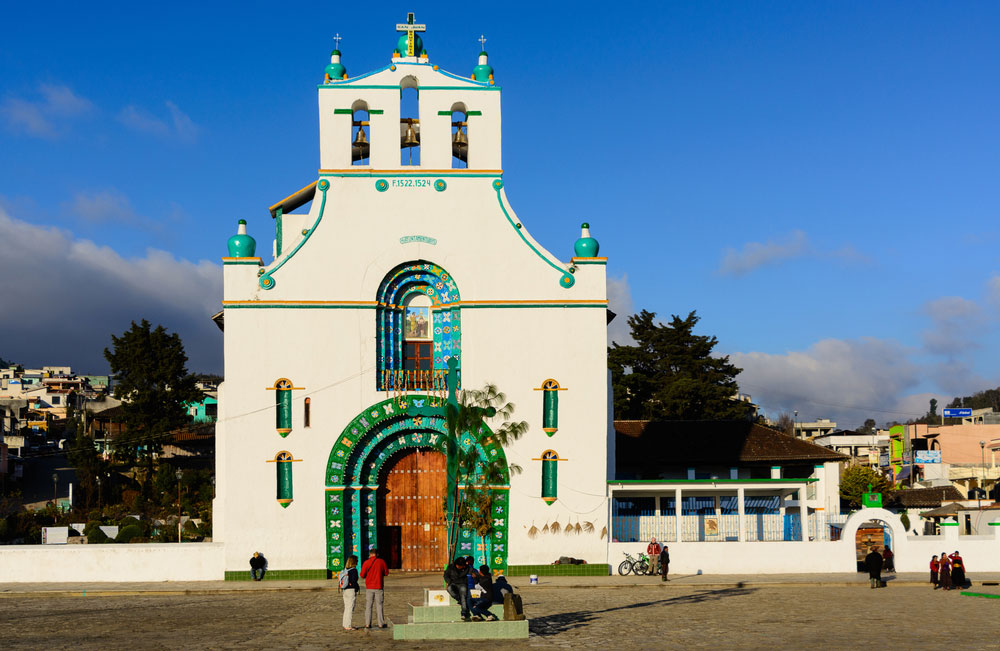I have been fortunate to visit Mexico many times. I recently returned to the highlands of Chiapas to visit San Cristóbal de las Casas, a 16th-century Spanish colonial town that used to be the capital of the state that was once part of Guatemala. San Cristóbal is known for its ornate churches, museums, textiles and amber. Its large indigenous population, mostly comprised of Tzotzils and Tzeltals, gives San Cristóbal a distinct cultural heritage. This pueblo mágico (magical village) was recognized as the “most magical of the Pueblos Mágicos” by Felipe Calderón in 2010, when he was the president of Mexico.
When I visited 12 years ago, San Cristóbal de las Casas was a small, sleepy town tucked away in the hills. It only got electricity in the 1980s. Our guide, Gaby, informed us that San Cristóbal saw more changes over the last 15 years than it had in the previous 150. Because of the Zapatista struggle against military, paramilitary and corporate incursions into Chiapas, little ‘development’ had occurred. Most of Chiapas was not connected by road to the rest of the country, had a heavy military presence and was considered dangerous for tourists. Today, San Cristóbal de las Casas is a bustling tourist centre with visitors mostly from Europe, Mexico and Israel. There is a range of boutique hotels along its cobble-stoned streets, craft shops, colourful local markets, a variety of cuisines, and great locally grown coffee at every corner. There is a café that supports the Zapatistas and sells their literature and merchandise to assist autonomous communities. The Mayan people wear traditional clothes that indicate the villages from where they come. They sell their wares in markets and hawk them in the pedestrian-only city centre, where the marimba is played each evening from a raised bandstand.
While there is much to see and do in the town itself and in the surrounding areas, known for their natural beauty, I could not wait to return to the Chamula, a small Tzotzil town, just 10 kilometres from San Cristóbal. Chamula is fiercely independent and enjoys autonomy, allowing no outside police or military into the municipality. They follow their own customs, have their own laws, police and judges. Civic leaders — only men — wear traditional white clothing with coloured ribbons designating their authority. Chamula had been at the centre of the Zapatista uprising. The Zapatistas still have many sympathizers and a strong presence in the northeastern part of Chiapas.
The church of San Juan that dominates the main cobblestone plaza made a lasting impression. While no photos can be taken in the church or in much of the town, the experience of having been there was seared in my memory. I knew I would return. The whitewashed church, Iglesia de San Juan, with green painted arches and coloured tiles with Mayan motifs, seemed like a Catholic church from the outside. It is and it is not, for Mayan spiritual beliefs, rituals and practices are infused in worship there. The inside of the church is thick with incense made from resin. The ‘Catholic’ saints that line the walls represent Mayan gods. Each saint bears a mirror on their chest, to help the soul that departed in prayer to return to the body. Others say the mirrors keep the evil eye at bay.
The church has no pews; the ground is covered with freshly-raked pine needles. Candles of various sizes and colours burn directly on the tiled floor, making the entire church glow. Volunteers constantly clean the floor. It is a church bustling with ritual activity. The main hall is devoted to spiritual ceremonies for healing the physical body. At the front of the church, groups of people are gathered to cure mental or emotional ailments. Men and women in traditional clothing (women in black, long, wool skirts and coloured blouses, men in robes or loose pants and shirts), and children form groups of three to five throughout the church. They sit on the floor as they prepare and conduct healing ceremonies.
The ‘healer’ in each group could be a family member, or a person in the community recognized for his or her healing powers. A few ‘witnesses’ from the family usually accompany the person seeking a cure. The healer discusses the ailment with the patient and designs a healing ritual accordingly. The patient brings the items that have been prescribed for the ceremony: candles of various sizes and colours, eggs, a local drink or Coca-Cola, and sometimes a live chicken in a basket. The drink is used to represent the wine of the Eucharist, and the chicken is symbolic of Christ’s sacrifice for mankind. The sacrificial chicken is buried, as Mayans are traditionally vegetarian. The healer arranges the items and chants in Tzotzil, sometimes placing an offering above the head or on the body of the patient. The church is spiritually charged with intense emotional energy.
The fierce adherence to their own spiritual, cultural and linguistic practices, thickly overlaid upon a rudimentary Catholic belief system, is testimony to the Mayan people’s will to survive the colonial onslaught. A proud people, known for having created one of the world’s first advanced writing systems and the Mayan calendar, their spiritual worldview suffuses the Chamula church. For a moment I was suspended in another time, another world.











